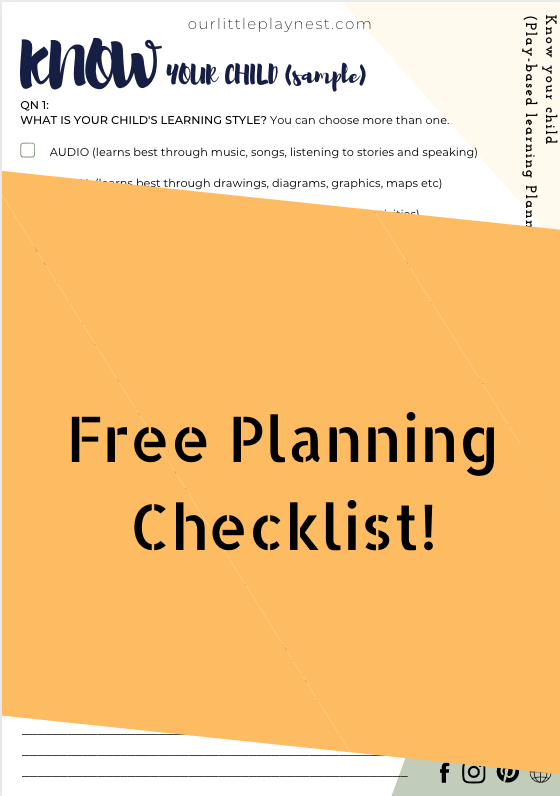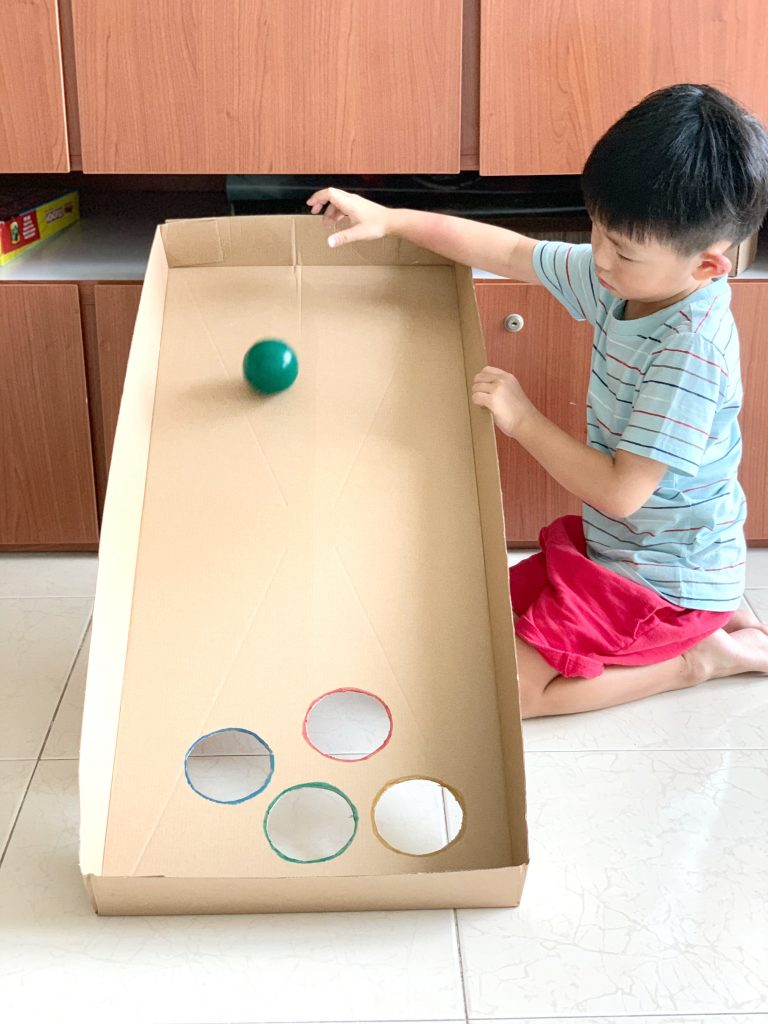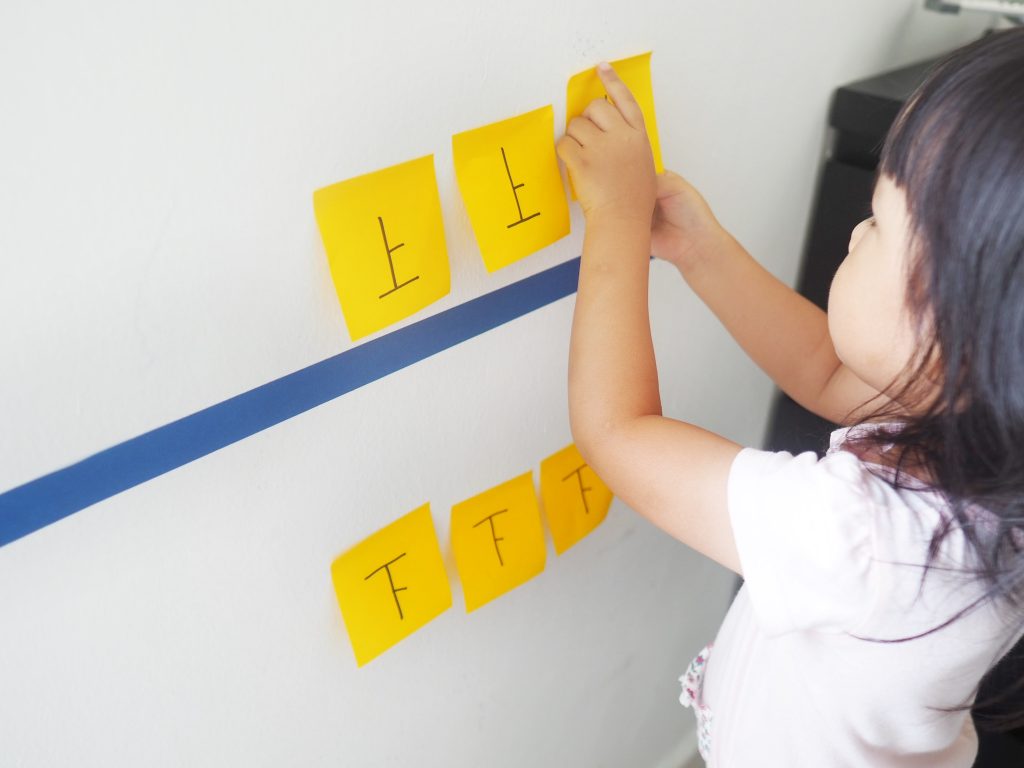We all know the importance of playing and learning in early childhood education.
Research has also shown plenty of benefits when children play.
Through play, children pick up several developmental skills e.g. communication, social skills, cognitive, critical thinking, motor skills… and it fosters creative thinking while children play.
“Scientists have recently determined that it takes approximately 400 repetitions to create a new synapse in the brain—unless it is done with play, in which case, it takes between 10 and 20 repetitions!”
Dr. Karyn Purvis
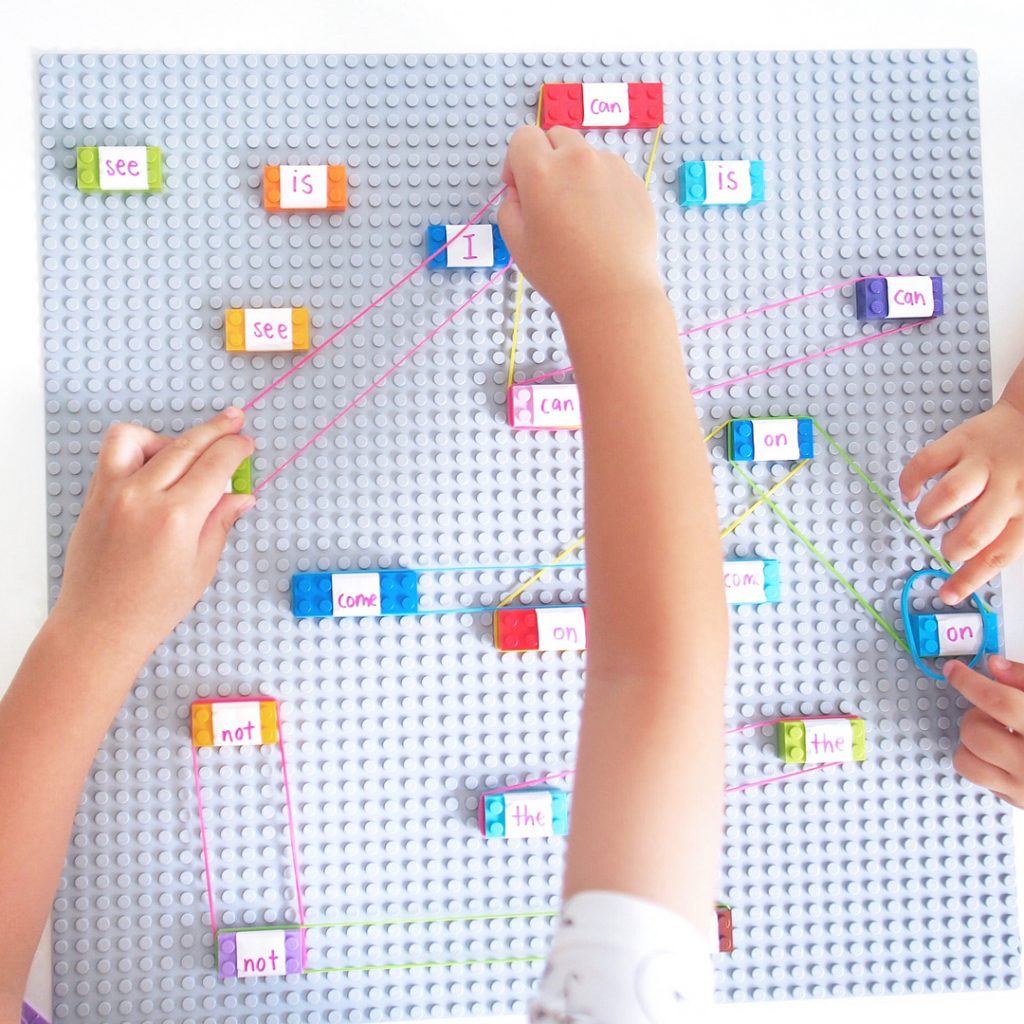
Despite being aware of the benefits of play-based learning, it can be quite challenging when you try to engage your kids in play-based learning. Many parents experience lots of frustrations:
“My child refuses to try the activities that I prepared.”
“How to get my preschooler to focus?”
“How to increase the attention span of my 3-year-old?”
“My child is lazy and unmotivated.”
“How do I engage my toddler in play-based learning?”
Contrary to popular belief, you don’t need to be a certified teacher to teach your children. You don’t need a play-based curriculum all lined up before you can engage your children in play-based learning!
So how can you successfully engage your child in play-based learning?
Here’s my answer: know your child.
Read the 5 tips below to find out more.
[BONUS!] To get you thinking about engaging your child in play-based learning, I have prepared a free planning checklist for you. Run through the few questions in the worksheet and you should be able to come up with a couple of play ideas that suit your child! Free download at the end of the post!
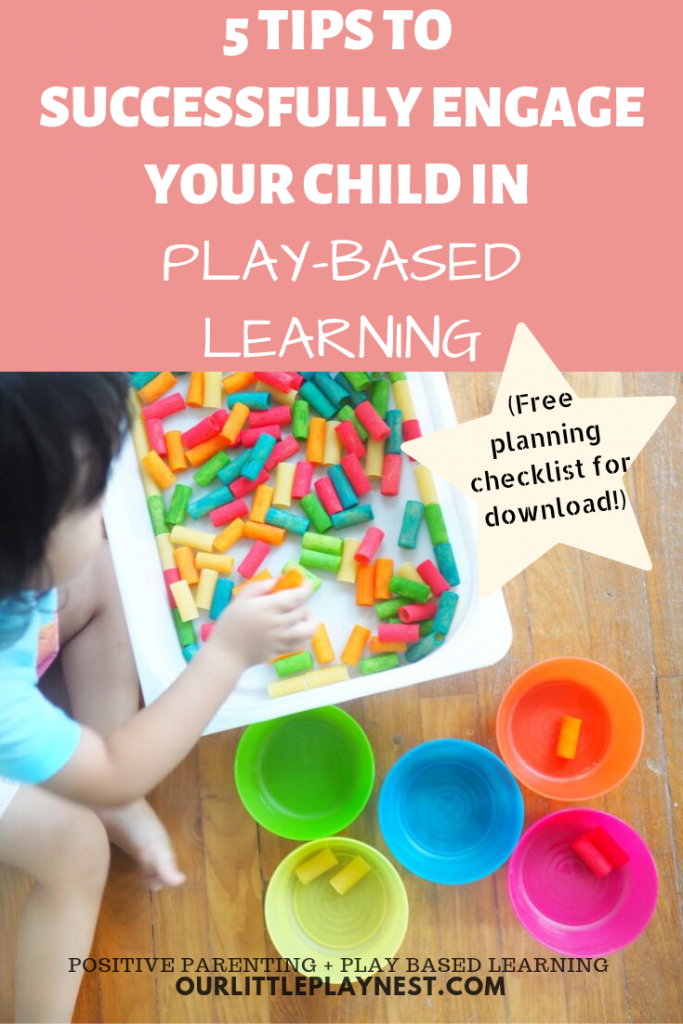
1. Satisfy his basic needs and fill up his emotional tank.
Your child cannot be engaged and learn if he is feeling hungry, tired or uncomfortable. He also will not be actively involved if he doesn’t feel loved or belonged.
Before you conduct the activities, make sure that your child is well-rested and well-fed. You might want to first spend some quality time by reading a book, rubbing his back, talking about his day, etc. This is especially important when your child hasn’t seen you for the whole day! Make him feel loved and belonged before attempting to get any learning done.
2. Focus on your child: curate activities based on his interests.
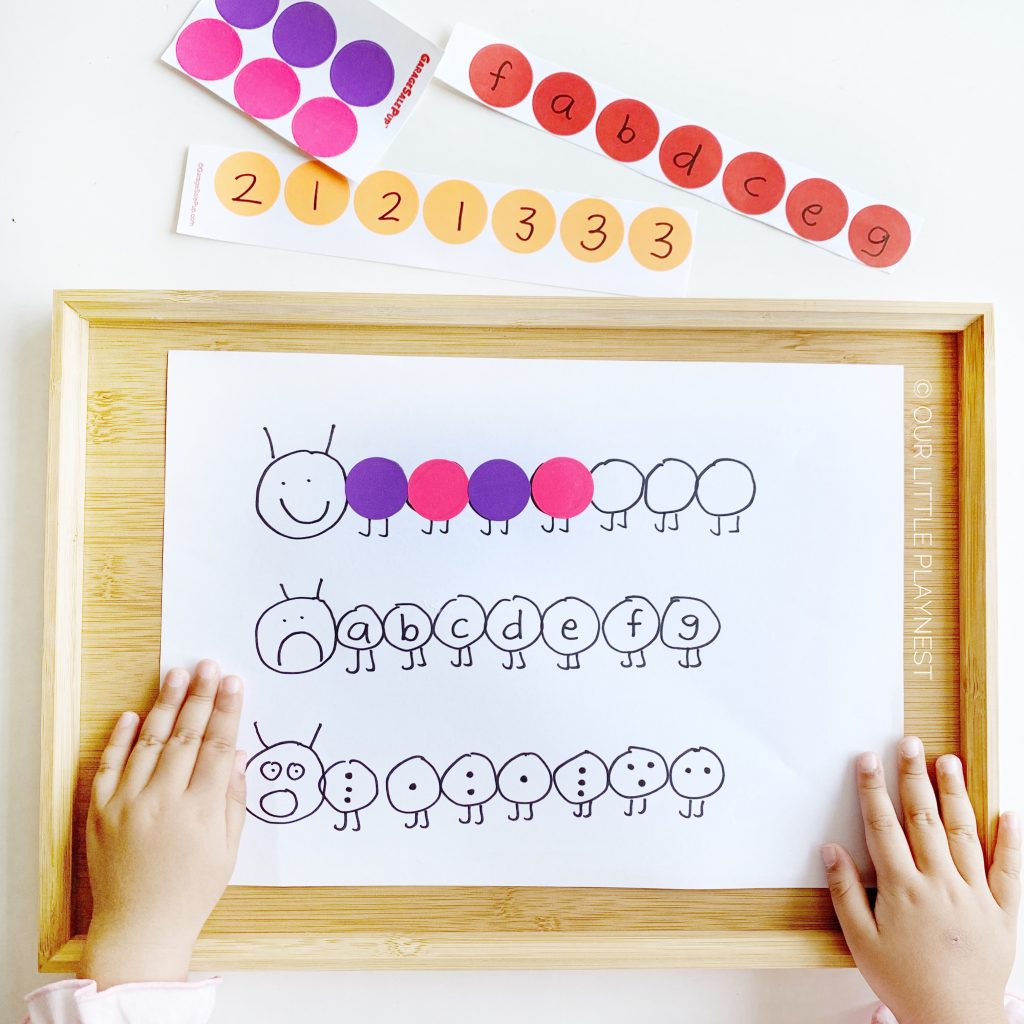
My girl is suddenly keen on caterpillars, so she willingly completed these activities with the dot stickers! If I had drawn them in simple square boxes, I don’t think she can even last 10 seconds!
A dear friend shared that her girl could only last through 3 seconds with dot stickers.
My solution: create a context, based on her girl’s interest. She told me I am a genius 😀 (Read the whatsapp conversation I had with her)
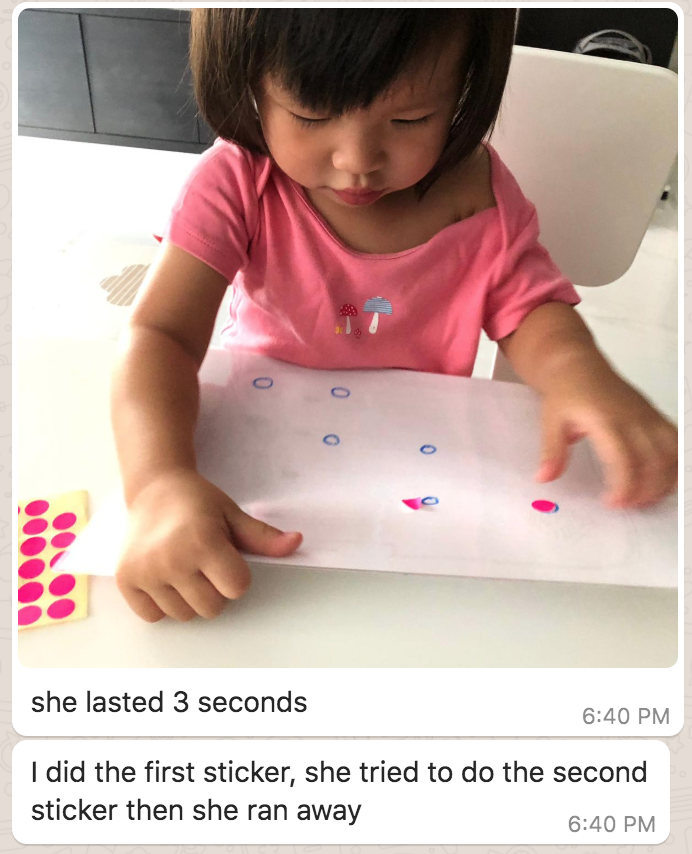
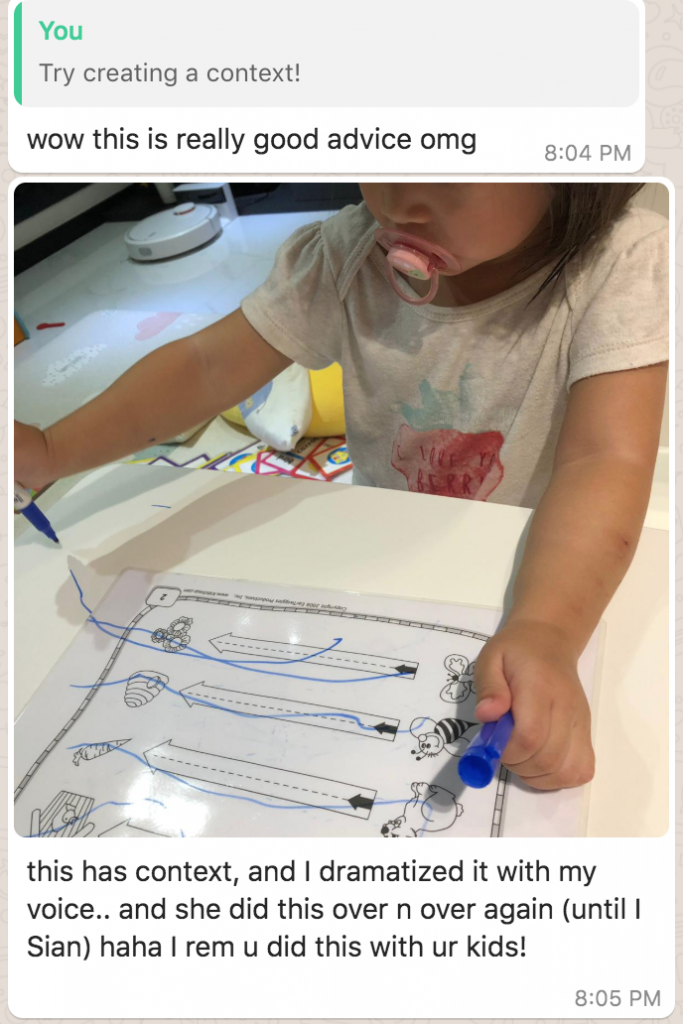
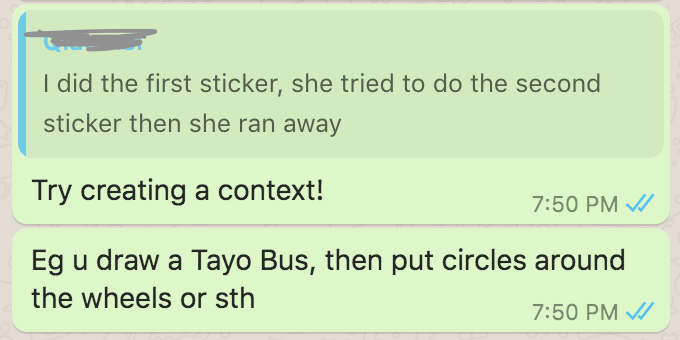
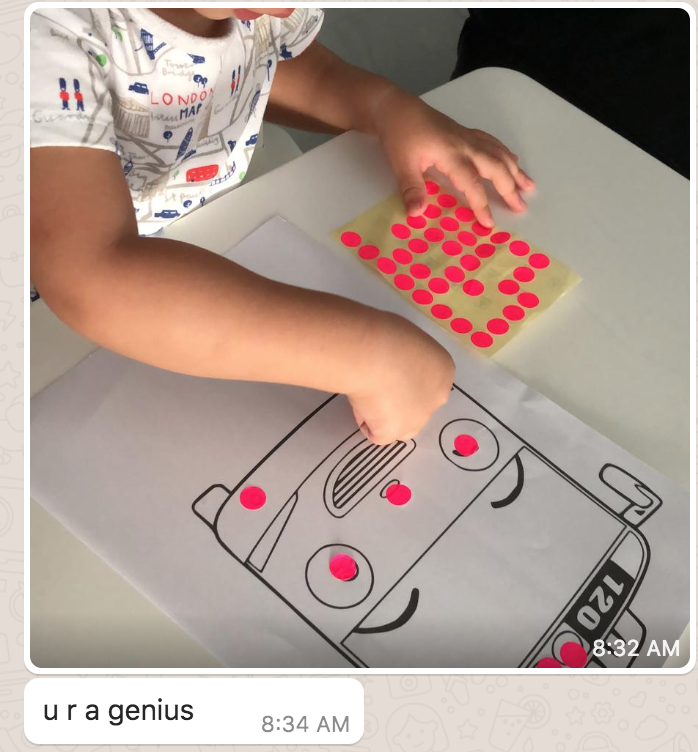
3. Focus on your child: curate activities based on his learning styles
Is your child an audio, kinesthetic and/or visual learner?
If he enjoys music, he likely needs some songs to go along with the activities. E.g. You can sing “Wheels on the bus” while he is trying to match wheels of the same colors.
Visual learners enjoy charts and diagrams, so you might like to draw along as he plays. Think about book-based activities that draw reference to pictures and images in the books.
Most children are kinesthetic learners, so do incorporate some movement in their play activities! E.g. I make the kids run around the house and search for post-its as they learn new Chinese characters. Other than gross motor movement, you can also get them to learn to spell by searching for letters in a sensory bin!
Need some ideas for sensory fillers, check them out here!
4. Temperament
Temperament refers to your child’s inborn personality. Every child is different, there is no need to compare your child to another kid!
Think about the temperaments of your child: Is he highly active? You might want to reduce the number of seatwork. Is he highly distractable? You might want to take away the other play items when you are trying to engage him in a specific activity. Does he have trouble finishing tasks? You might want to keep each play activity short and simple.
Learn more about the 9 temperament traits from this article.
5. Level of difficulty
It is important that the play activities you prepared are not too simple that your kids find them bored. They cannot be too challenging either or your kids may not even try them.
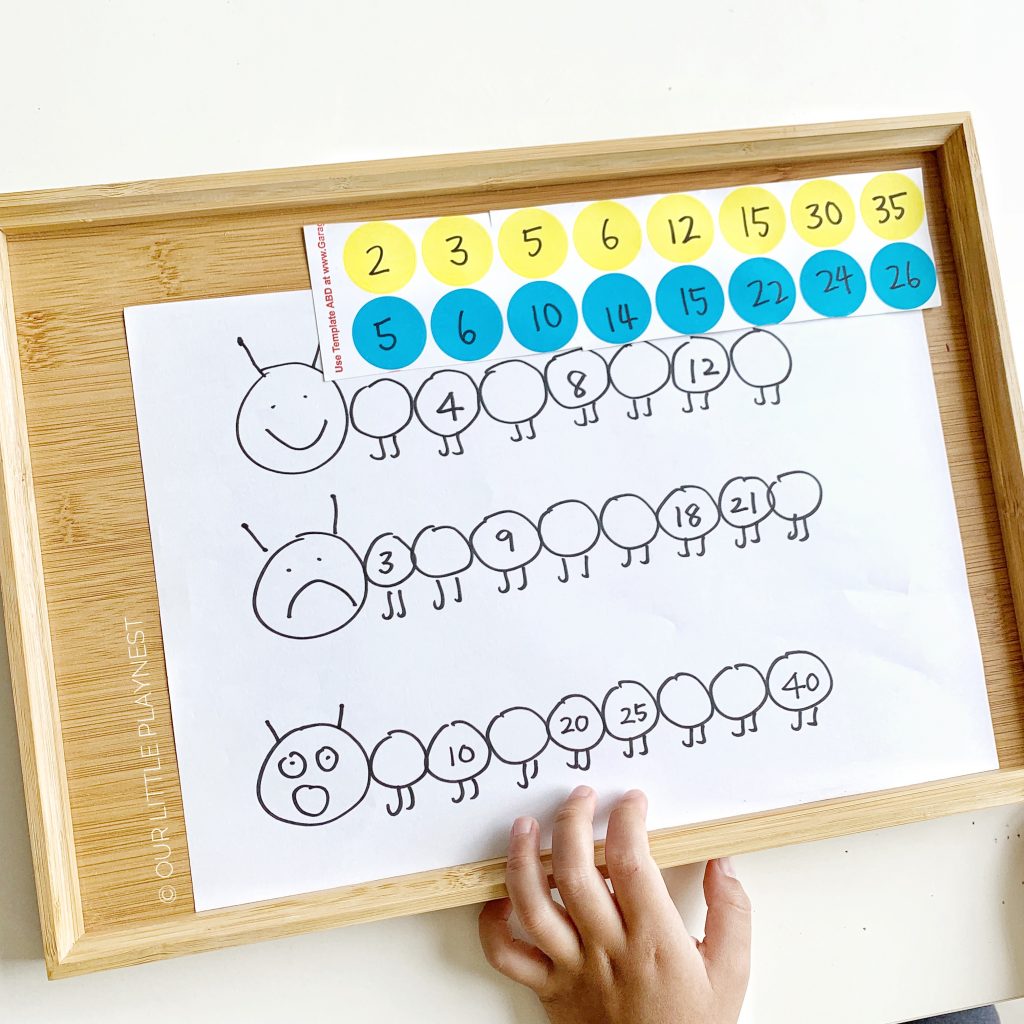
My girl can match colors so I introduced patterns to her instead. My son knows his skip counting by 2s and 5s very well, so I included skip counting by 3s to challenge him a little.
EVERY CHILD IS DIFFERENT
I know of mummies who feel upset that their children cannot sit down and complete a piece of activity. I also receive many questions about tips on getting the child to focus. Remember that every child is unique, what works for one kid may not work for another!
My solution is to focus on your child. Be mindful of his interests, learning styles and temperament – that’s how you can curate a suitable play activity for him to enjoy and learn!
Need help to come up with activities?
Download this free Know Your Child Planning Checklist and run through the 4 guiding questions.
I highly recommend that you go through this checklist because it helps you plan your ideas, and also give you a little push to help your child learn through play.
By the end of it, you should have at least 1 play idea that interest your child. The 2nd page in the document is a sample of what my thought process looks like when I plan an activity for the kids! If you do need help, feel free to drop me an email!
